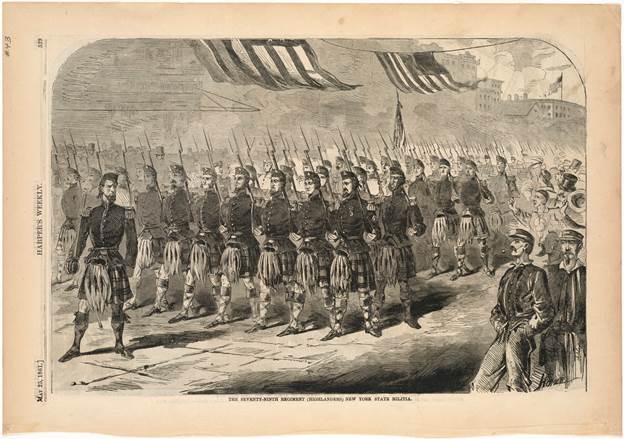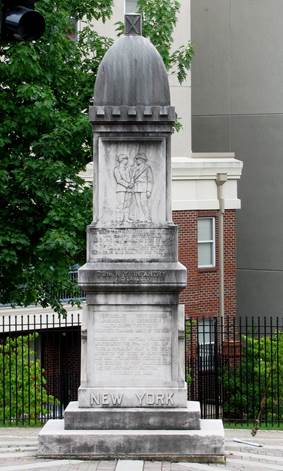| This Week’s Topic… | |

Best viewed in
|
The New York 79th Highlanders
The 79th New York Volunteer Infantry was a military regiment organized on June 20, 1859 in the state of New York. Prior to the American Civil War it was one of the three regiments which formed the Fourth Brigade of the First Division of the New York State Militia. The Fourth Brigade included the 11th and the 69th regiments. The 79th gained fame during the American Civil War for its service in the Union Army. Created as a social club in New York city in the fall of 1858, the Highland Guard or 79th New York was created with the help of the St. Andrews and Caledonian societies of New York and wealthy financial backers like Samual M. Elliot and James Cameron, the brother of the secretary of war. The organization had no actual connection to the 79th Cameron Highlanders of Scotland. Only in name and in tartan (Cameron of Erracht; same as ours ) did they identify with the 79th of the British Army. Their original duty was to parade, train as heavy artillery, and also provided a guard for the Prince of Wales when he visited the United States and did the same for the Japanese ambassador. The 79th, without knowing it, set themselves up to take part in nearly every major engagement of the civil war and become one of the most known and traveled regiments in the Union Army. When the war broke out in 1861, the Highlanders were mobilized and, as the regiment was under strength, new men were quickly recruited before they left New York City. Under the command of Lt. Col. Samuel Mackenzie Elliott, the regiment was mustered into service for a three-year duration on 29 May 1861, and attached to Mansfield's command, Department of Washington. On 2 June 1861, the Cameron Highlanders, 895 men strong, complete with pipe band, marched down Broadway on its way to Washington. Passing through Baltimore, the Highlanders received a good welcome—in contrast with the reception the 6th Massachusetts Infantry had received a few days earlier. Arriving in Washington, the regiment served in the defenses of the capital until the middle of July when it was attached to Sherman's Brigade, Tyler's Division, in McDowell's Army of Northeastern Virginia, for the advance on Manassas. The regiment would eventually be engaged at, the First Battle of Bull Run, Pocotaligo, the Battle of Secessionville, Pope's Campaign in Northern Virginia, Chantilly, Maryland Campaign, the battles of South Mountain and Antietam, Battle of Fredericksburg, the ill-fated "Mud March", Vicksburg Campaign and the Siege of Vicksburg, Fort Sanders, and battles of the Wilderness, and Spotsylvania. It was at Spotsylvania that the original Cameron Highlanders were to fight their last engagement. As the regiment stood in line on the bloody battlefield, the men received the order for muster-out, their term of enlistment having expired on 13 May 1864. Those veterans whose term of enlistment had expired returned to New York City, where they were discharged. Less than 130 of the regiment's original members were left. Those with unexpired service were sent to guard Confederate prisoners bound for Alexandria. These men were later formed into companies A and B, which formed the nucleus of the "New Cameron Highlanders" that Col. Samuel M. Elliott had received authority to recruit on 4 May. In November 1864, companies C and D, made up of new volunteers, were added to the regiment, and Company E joined in January 1865. A further company, F, was organized in the field from recruits received in March 1865. The new regiment served at Cold Harbor, Bethesda Church, Petersburg, Weldon Railroad and Poplar Springs Church. In October, they were appointed provost guard of the 9th Corps, taking part in the Appomattox Campaign. After Robert E. Lee's surrender, the regiment moved back to Washington and took part in the Grand Review of the Armies on 23 May 1865. It continued duties at Washington until the men were eventually mustered out of Federal service on 14 June 1865, whereupon the regiment returned to state militia status. Ladies of the New York Scottish Society sent new glengarries for the regiment to wear for their re-entry into New York City. During the war, the 79th New York lost 198 killed, plus 304 wounded or missing, out of a total enrollment of 2,200.
|

